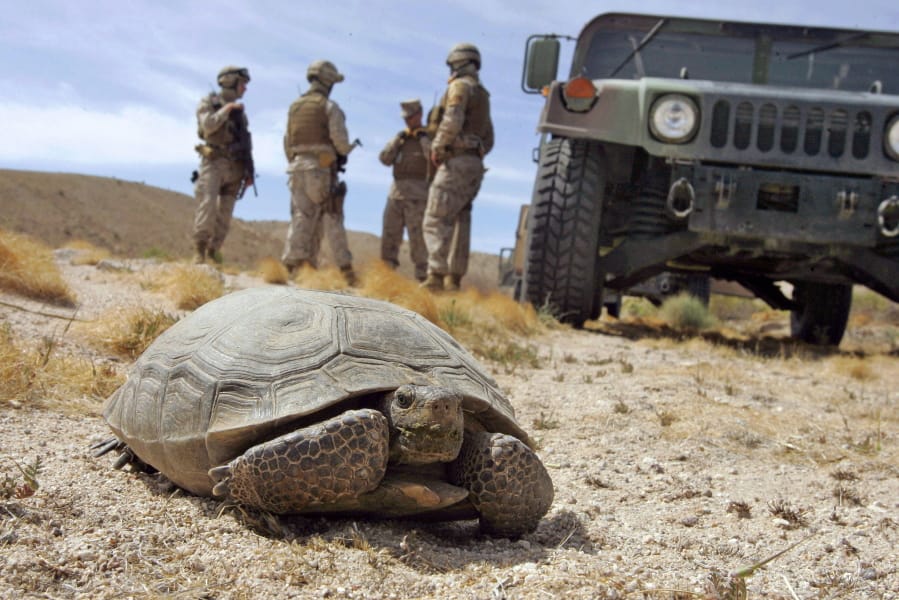RENO, Nev. — The Trump administration announced final approval Monday of the largest solar energy project in the U.S. and one of the biggest in the world despite objections from conservationists who say it will destroy thousands of acres of habitat critical to the survival of the threatened Mojave desert tortoise in Nevada.
The $1 billion Gemini solar and battery storage project about 30 miles northeast of Las Vegas is expected to produce 690 megawatts of electricity — enough to power 260,000 households — and annually offset greenhouse emissions of about 83,000 cars.
It will create about 2,000 direct and indirect jobs and inject an estimated $712.5 million in the economy as the nation tries to recover from the downturn brought on by the coronavirus outbreak, Interior Secretary David Bernhardt said.
The first phase of the project covering about 11 square miles of federal land is expected to be completed next year with 440 MW of solar capacity for use in Nevada. Another 250 MW of generating capacity would be added in the second phase with the power sold in Nevada or exported to Arizona and California in 2022.
The joint venture by Australia’s Quinbrook Infrastructure Partners and California-based Arevia Power is part of an integrated resource plan Nevada’s Public Utilities Commission approved last year for NV Energy.
Coupled with a 380 megawatt AC battery storage system, it will be one of the first in Nevada to include batteries to enable power delivery after the sun goes down.
“The solar industry is resilient and a project like this one will bring jobs and private investment to the state when we need it most,” said Abigail Ross Hopper, president and CEO of the Solar Energy Industries Association.
Environmental groups including the Western Watersheds Project and Basin and Range Watch have been trying unsuccessfully for years to persuade the Bureau of Land Management to build the project elsewhere.
“We believe solar energy can be an incredibly good thing but if you put it in the wrong location it can be the worst thing in the world for the environment,” said Kevin Emmerich, director of Basin and Range Watch.
“We don’t think it will cause the extinction of the desert tortoise, but it is going to be a fairly big nail in the coffin of the species,” he said in an interview Monday.
The site is also home to two types of rare milkvetch plants, kit foxes, burrowing owls and wildflowers, said Laura Cunningham, a biologist with the Western Watersheds Project.



